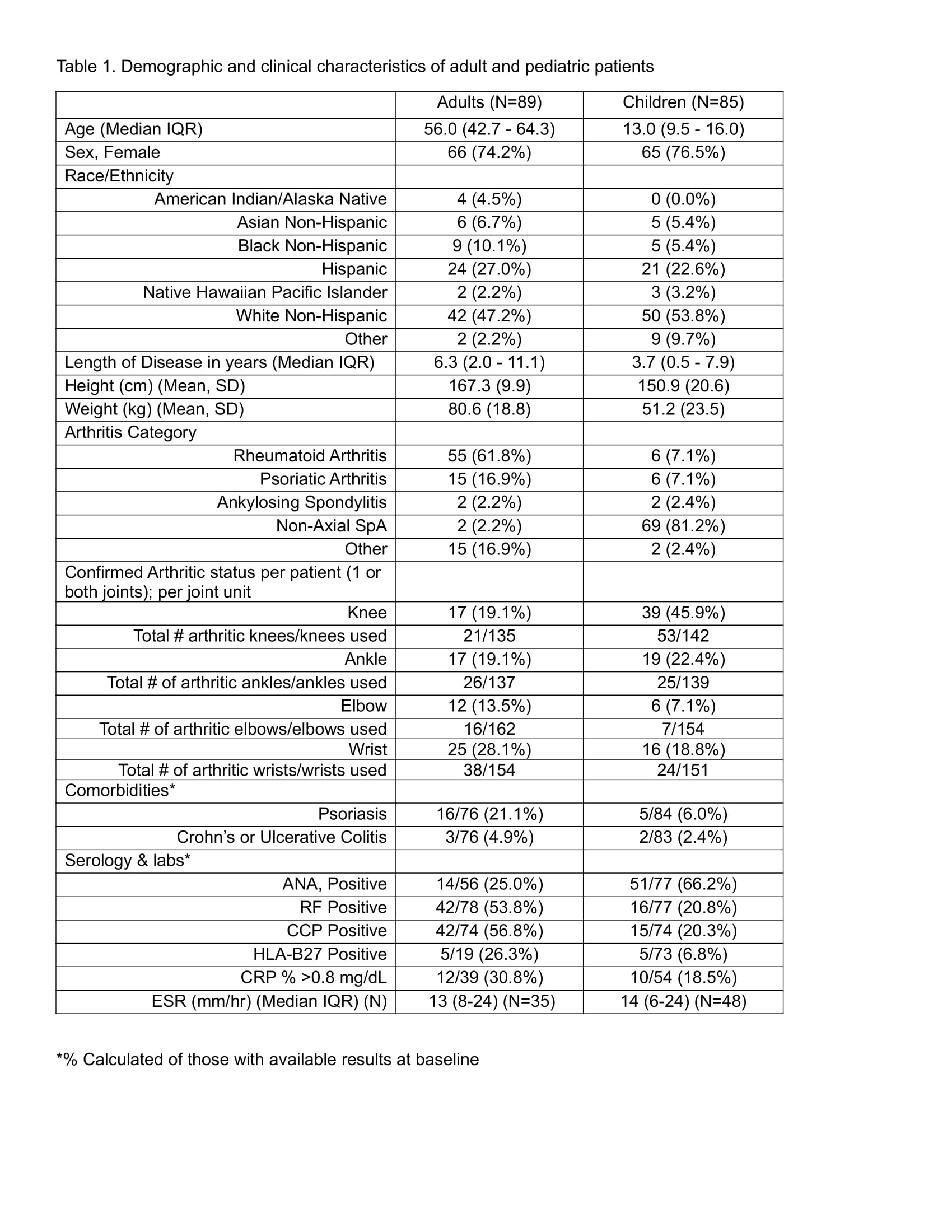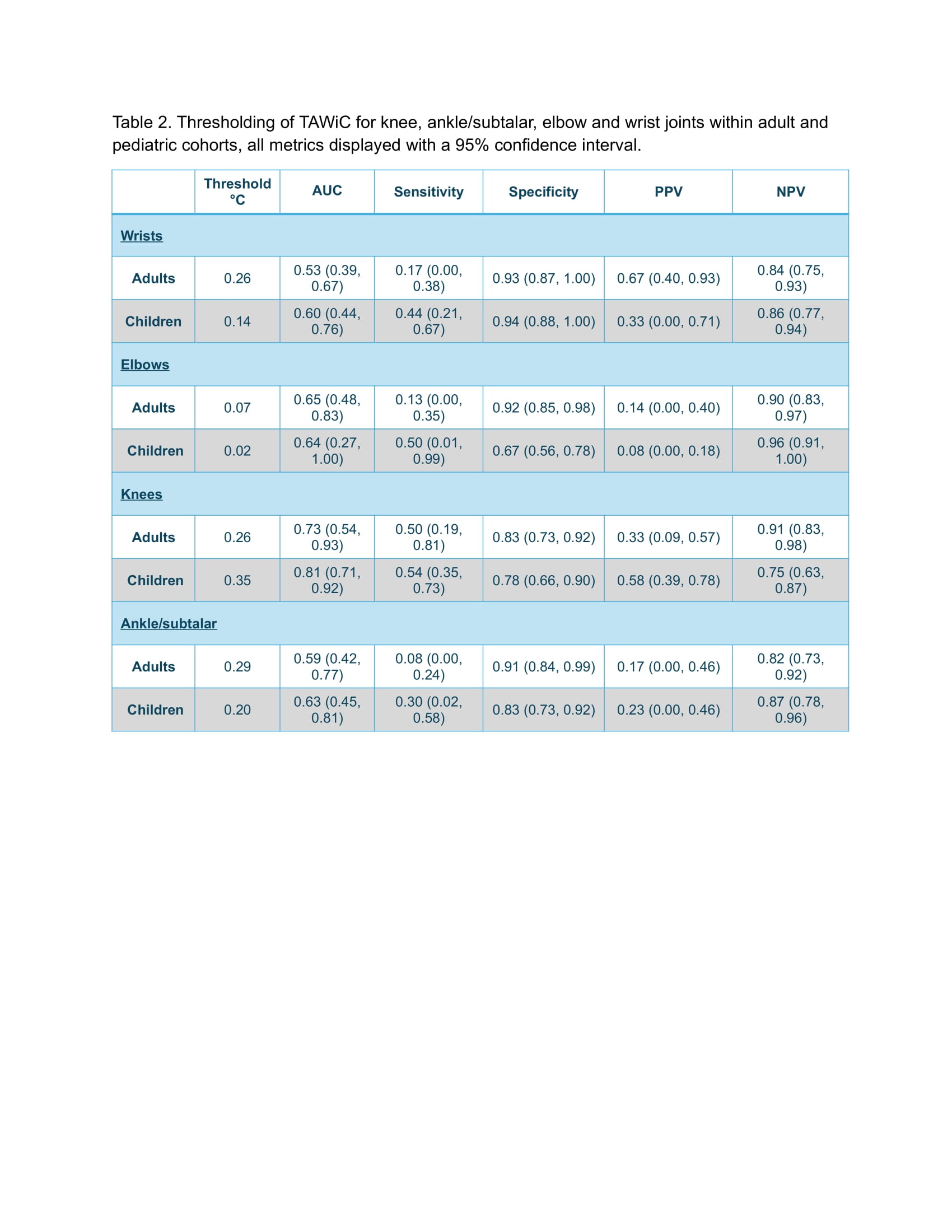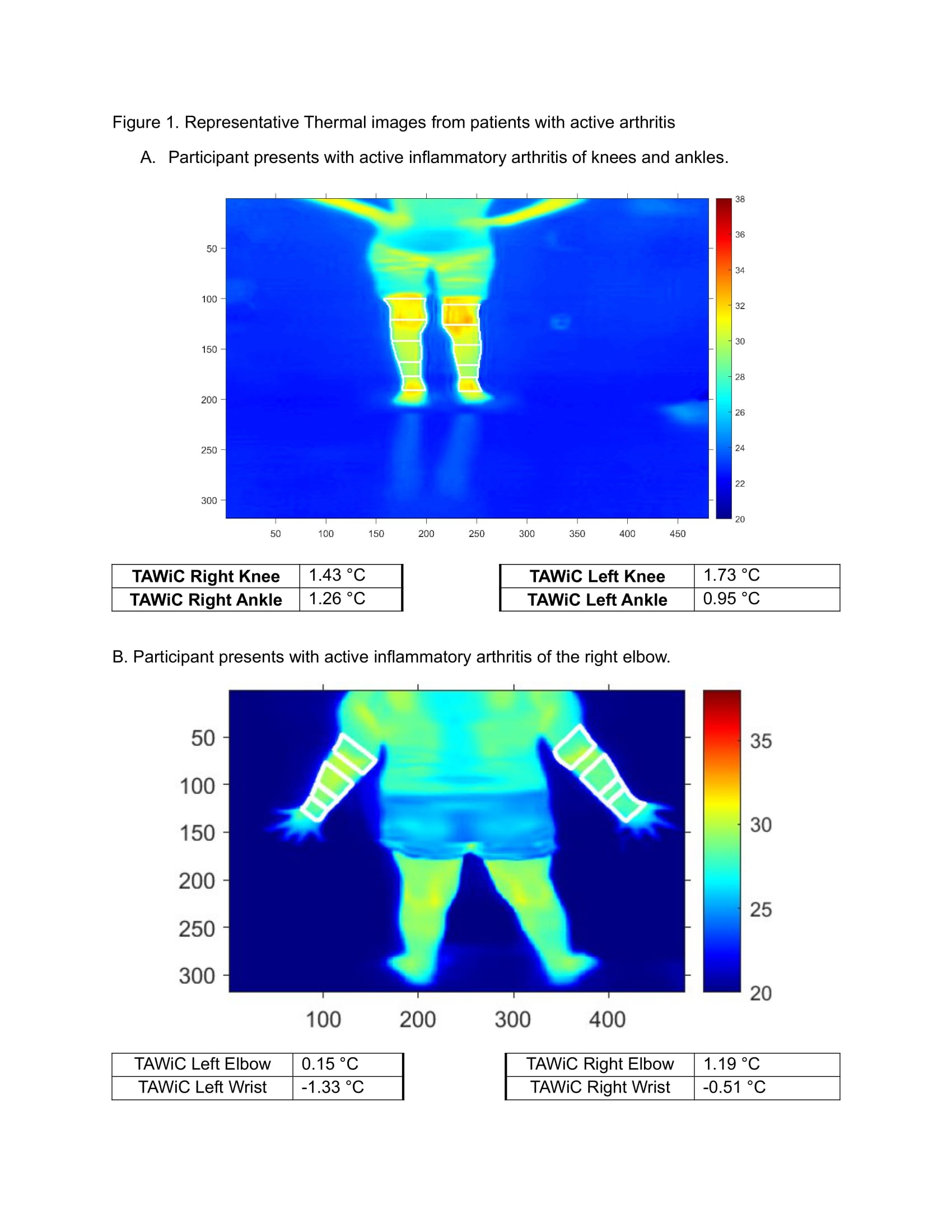Session Information
Session Type: Poster Session C
Session Time: 10:30AM-12:30PM
Background/Purpose: The Thermal imaging-based Temperature After Within-limb Calibration (TAWiC) algorithm for the detection of arthritis in the knees has been validated in children by our team. This algorithm performed well across different thermal cameras including smartphone-attached FLIR thermal cameras. However, its performance has not been evaluated in other joints or adults. Our objective was to apply similar algorithms in adults and children with inflammatory arthritis to further develop the TAWiC thresholds for the knee, ankle/subtalar, elbow and wrist joints.
Methods: Patients 4 years or older with suspected active inflammatory arthritis in at least one knee, ankle/subtalar, elbow, or wrist joint were enrolled from Harborview Medical Center (Seattle) or Seattle Children’s Hospital after appropriate consent or assents were obtained. A joint exam performed by the treating clinician was recorded as the gold standard of joint health status. Standard infrared thermal imaging was obtained from patients using standard views by a FLIR One Pro camera and analyzed subsequently within MATLAB. Patients were assigned randomly into either a development or validation cohort for each joint analysis, stratified by arthritic status per gold standard. TAWiC of 95th percentile temperatures were compared between inflamed and uninflamed joints using generalized estimating equations models, accounting for repeated measures across participants with bilateral joint data. Receiver Operator Characteristic (ROC) curves were plotted for each joint using data from the development cohort and Area Under the Curve (AUC) was reported with 95% confidence intervals for each curve. Thresholds were set based on Youden index to maximize the sum of sensitivity and specificity for each joint by age group (adults and children). Sensitivity and specificity were calculated and reported with 95% confidence intervals using the derived cutoffs in the validation cohort for each group to test the performance of the TAWiC.
Results: A total of 89 adults and 85 children were enrolled and their demographic and clinical characteristics were summarized in Table 1. Knees were the most commonly affected joints in children, and wrists were most commonly affected in adults. TAWiC95 thresholds for each joint were derived for adult and pediatric cohorts separately, and these values varied (Table 2). Further validation of applying the TAWiC95 threshold to detect arthritis was conducted, and the sensitivity and specificity of this algorithm for adults with active inflammatory arthritis in the knees were 50% and 83%, respectively (AUC 0.73) (Table 2). Due to the limited number of inflamed joints and relatively smaller surface area of joints other than the knee, the validation of TAWiC of other joints was insufficient. Representative thermal images of patients with clinically diagnosed arthritis in investigated joints are included in Figure 1.
Conclusion: To our knowledge, this is the first reported validation of the TAWiC algorithm for knee inflammatory arthritis in adults. Ongoing and future studies will seek to validate use of the TAWiC algorithm for assessing arthritis in other joints.
To cite this abstract in AMA style:
Jenna T, Erin S, Pooni R, Adriel L, Van den Bogaerde S, Luey A, Hamilton I, Paluvayi S, Tran M, Robles-Navarro J, Muse I, Klein A, Lee T, Hughes G, Bays A, Ferucci E, Biswas D, Patridge S, Zhao Y. Development and Validation of an Arthritis-Detection Algorithm Using Thermal Imaging in Adults and Children [abstract]. Arthritis Rheumatol. 2024; 76 (suppl 9). https://acrabstracts.org/abstract/development-and-validation-of-an-arthritis-detection-algorithm-using-thermal-imaging-in-adults-and-children/. Accessed .« Back to ACR Convergence 2024
ACR Meeting Abstracts - https://acrabstracts.org/abstract/development-and-validation-of-an-arthritis-detection-algorithm-using-thermal-imaging-in-adults-and-children/



